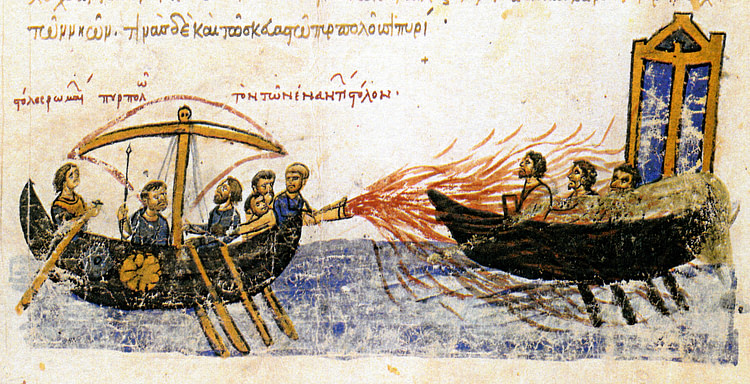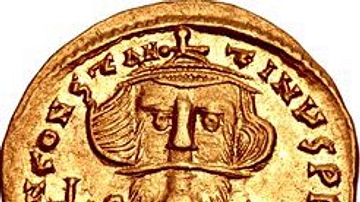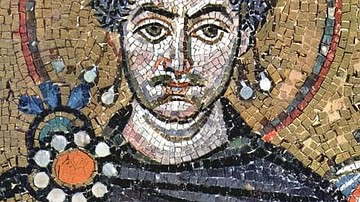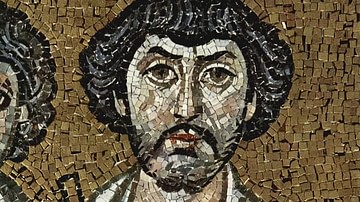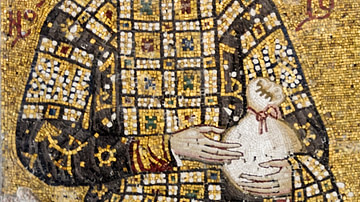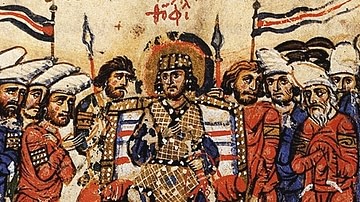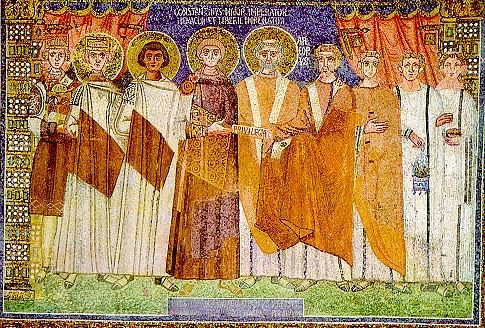
Constantine IV ruled as emperor of the Byzantine empire from 668 to 685 CE. His reign is best remembered today for the five-year Arab siege of Constantinople from 674 CE, which the Byzantines resisted thanks to their strong fortifications and the secret weapon of Greek Fire. Although not hugely successful in other theatres, the reign of Constantine would at least stabilize the Empire, perpetuate the rule of Christianity in the East, and permit something of a revival of Byzantine fortunes under subsequent emperors.
Succession
Constantine was the eldest son of Constans II (r. 641-668 CE) and he had been crowned co-emperor, as was customary for the chosen heir, in 654 CE. Constans was unpopular with the Church for his failure to reconcile the two sides of the raging debate on dogma and on whether Christ had one will and one energy, or two of both. He did not win any admirers for his military record, either, as the Arab Caliphate inflicted a series of defeats on Byzantine armies throughout his reign. When the emperor relocated to Syracuse on Sicily for greater safety it was the last straw for the Byzantine aristocracy who envisaged their abandonment in Constantinople, the capital. It was no surprise, then, that Constans was assassinated - the deed done, while he took his bath, by one of his own military entourage on 15 September 668 CE, with a soap dish as the inglorious weapon.
Constantine IV at first ruled alongside his brothers Herakleios and Tiberios as co-emperors. Constantine travelled to Sicily where he put down the rebellion led by Mizizios, one of the conspirators who had murdered his father. It was in the east, though, with the now annual incursions of Byzantine Asia Minor by the Arab Caliphate, that the empire was most threatened. Fortunately for the Byzantines, Constantine would prove to be,
…a wise statesman and born leader of men, the first decade of whose reign marked a watershed in the history of Christendom: the moment when, for the first time, the armies of the Crescent were turned and put to flight by those of the Cross.
(Norwich, 101)
The Siege of Constantinople
One of the most persistent attacks in Constantinople's long history came with the Arab siege of 674-678 CE. Muawiya (r. 661-680 CE), the caliph and founder of the Umayyad Caliphate, had already enjoyed victories against Byzantine armies during the reign of Constans II and in 670 CE the Muslim fleet took Cyprus, Rhodes and Kos, and then moved into the northern Aegean. Next, they attacked Kyzikos (Cyzicus) on the south coast of the Sea of Marmara. Now possessing a handy peninsula from which to launch attacks, Constantinople was the next major target in 674 CE. The city's legendary fortifications, the Theodosian Walls, and the Byzantine secret incendiary weapon of Greek Fire (a highly inflammable liquid sprayed from ships) meant that, ultimately, the five-year siege was unsuccessful.
During the siege, every summer the city resisted siege engines and artillery fire from huge catapults, to the frustration of the army of Muawiya. Meanwhile, the Caliphate's armies in Asia Minor had been suffering setbacks - for example, there were attacks by the Mardaites tribesmen of Lebanon (encouraged by Constantine) - and so when his fleet was torched by Greek Fire, the caliph was forced to sign a 30-year truce with Byzantium. It was the first major defeat the Arabs had suffered since the rise of Islam. In 679 CE Muawiya was obliged to give up the Aegean islands he had conquered and pay an annual tribute which included 3,000 gold coins, 50 slaves and 50 thoroughbred horses.
Constantine had preserved Christendom. If the capital had fallen then the Caliphate would have pushed on through the unprotected Balkans, across central Europe and probably even captured Rome. Consequently, Europe may very well have had a different religion if the 7th century CE siege of Constantinople had been as successful as that of the 15th century CE when the armies of Islam had sacked the jewel of the old Eastern Roman Empire.
Northern & Western Frontiers
Constantine still faced problems elsewhere, though. The Empire had fast been crumbling at the edges throughout the first half of the 7th century CE. Now the Arabs in North Africa were steadily increasing their territory at the expense of the empire and the Bulgars, led by Asparuch, were also flexing their military muscle south of the Danube. On top of that, the Slavs had attacked Thessaloniki, the empire's second most important city. Thessaloniki was successfully defended but, after a failed Byzantine naval mission in 680 CE, the Bulgar kingdom became the first in Byzantine territory which an emperor was obliged to recognise as independent. Constantine, preferring to concentrate his armies in Asia, was constrained to sign a treaty in 681 CE which necessitated the emperor paying a handsome annual tribute to the Bulgars as a price for peace. Constantine, in any case, created a new military province (theme) in Thrace, to create a buffer defence against any future Bulgar incursions.
In Italy, meanwhile, Constantine was obliged to sign a peace treaty with the ambitious Lombards who had captured Byzantine territory in the south. A similar treaty was signed with the Avars in central Europe. Greater success was enjoyed in Cilicia in 684 CE and most of the lands of the Armenians became a Byzantine protectorate at their own request. The empire had found its military feet again and stopped the rot after half a century of serious setbacks but it was still far from being secure against all-comers.
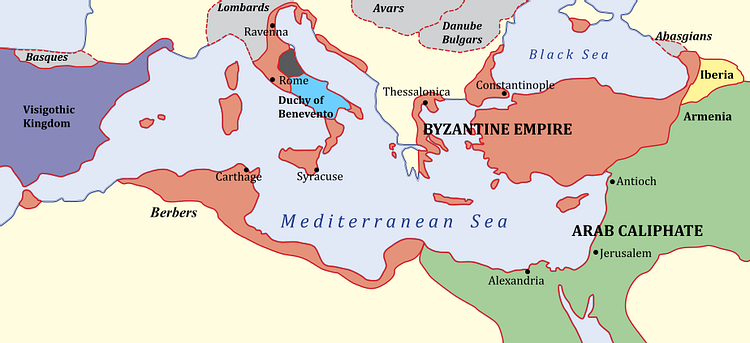
The Sixth Ecumenical Council
Another notable event of Constantine's reign was the Sixth Ecumenical Council of 680-681 CE. Constantine had communicated with Pope Agatho (678-681 CE) who enthusiastically agreed that a decision needed to be made on the Christian Church's fundamental principles regarding the two natures of Jesus Christ, the embodiment of both the human and divine spirit. Accordingly, 174 delegates representing the Church from all parts of the empire gathered in the Domed Hall of the royal palace in Constantinople. The Council, meeting 18 times over ten months and presided over by the emperor himself, condemned both Monotheletism (the idea that Jesus Christ had a single will) and Monoenergism (that Christ had a single energy or force). Anyone who had or still disagreed with that view was condemned as a heretic. Fortunately, since the empire's loss of Armenia and eastern territories, there were few adherents to the mono-position left anyway. The decree of the council finally reconciled the long-standing rift between the eastern and western churches.
Death & Successors
Constantine died of dysentery aged just 33 in 685 CE and was succeeded by his son and chosen heir Justinian II (r. 685-695 CE). Constantine left the empire in the best state it had been in for the whole of the 7th century CE. The new emperor was only 16 but, nevertheless, he enjoyed some military success during his reign. Then the usurper Leontios (r. 695-698 CE), an ambitious general backed by a wave of popular discontent at Justinian's heavy taxes, slit the nose of the young emperor, exiled him and grabbed the throne for himself. Justinian would return, though, in 705 CE after besieging Constantinople and so ending the reign of Tiberios III. The emperor's second spell of rule (705-711 CE) revealed him as a nasty tyrant and he proved ineffective in stopping the Arabs overrunning much of Asia Minor.
